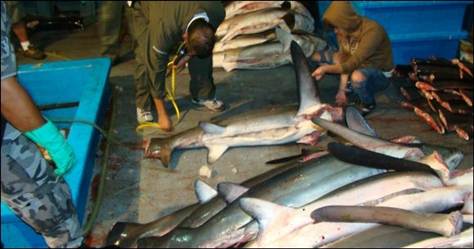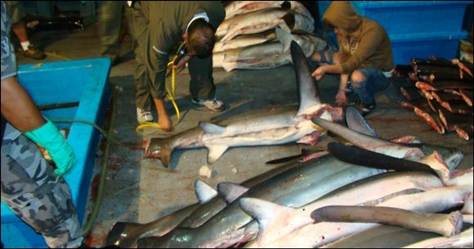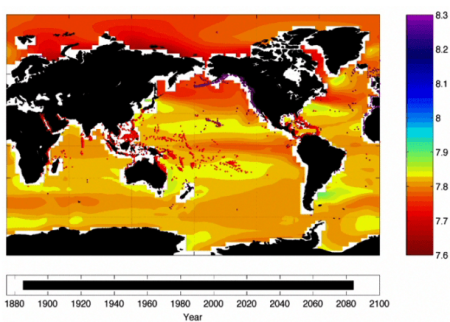
A patrol by park rangers and an Ecuador navy ship made the largest shark seizure in the country’s history, when they detained a fishing vessel as it was casting its nets 20 miles inside the Galapagos Marine Reserve. On board they found 357 dead sharks.
The government news agency says criminal proceedings will be pursued against the crew of the Ecuadorean fishing boat, in a report which also stats that the boat was detained last Tuesday southeast of Genovesa island inside the marine reserve.
John Bruno, a University of North Carolina marine biologist teaching at the Galapagos Science Center, wrote on his blog,
“As sad as it is,” he wrote, “I am really encouraged that the park now has the capacity to detect and apprehend illegal fishers in the marine reserve.”
Among the 357 dead sharks, law enforcement officers found 286 bigeye thresher, 22 blue sharks, 40 Galapagos sharks, 6 hammerhead sharks, 2 tiger sharks, and 1 mako shark. Shark poaching is a blooming trade, especially in Ecuador which ships a good chunk of the demand for shark fin soup in Asia. In the Galapagos, illegal shark fishing and finning — the act of cutting off the fins — took off in the late 1990s when the local sea cucumber fishery collapsed. The bodies of sharks are frequently dumped at sea after the fins are cut off.
Currently, 30 fisherman are currently detained and are awaiting their hearing. This may come as little discouragement for those still practicing shark poaching, who make a lot of money worth the risk a fine or a little jail time. The practice has put pressure on many shark species, some of which have become endangered or threatened with extinction.
The Galapagos, made famous by famous naturalist Charles Darwin, was declared an U.N. World Heritage site in 1979.









